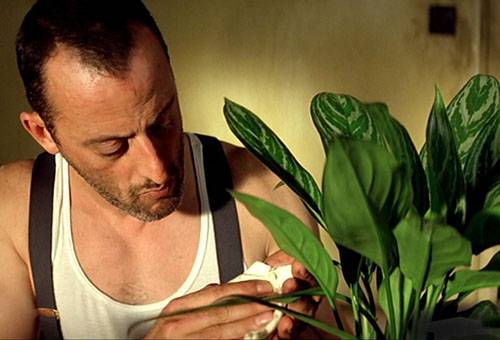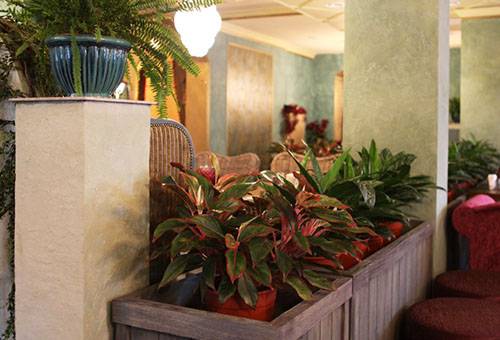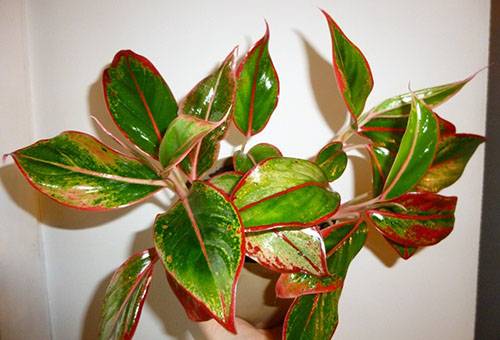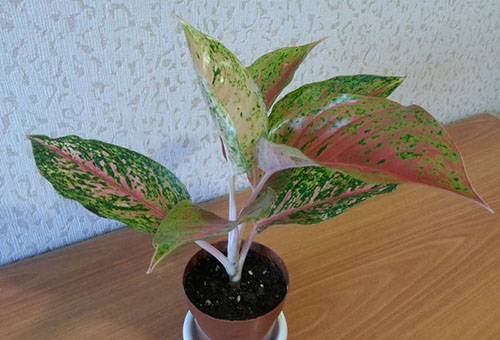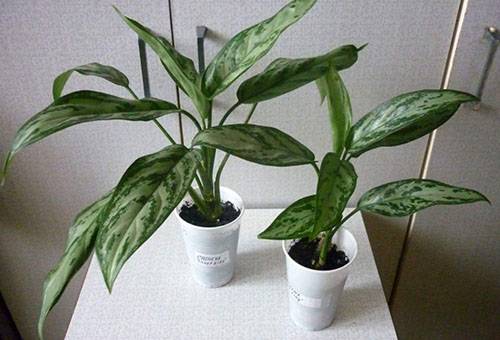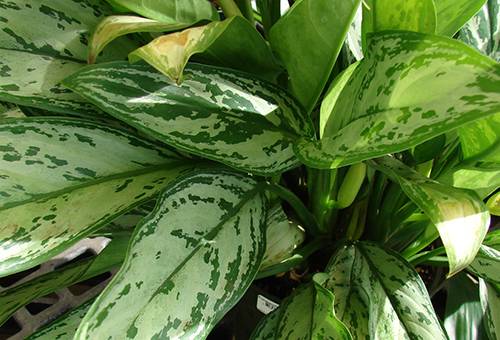The nuances of caring for aglaonema at home
Content:
If you purchased aglaonema as a houseplant, caring for it at home will not cause any difficulties or unpleasant surprises. This decorative-deciduous houseplant is considered among the gardeners as one of the most unpretentious and reliable. It is appreciated for its beautiful leaves, covered with various shapes of spots, because the flowers do not represent any aesthetic value.
Features of Aglaonema Care
Any plant belonging to the genus Aglaonema is a rosette of large mottled leaves on a small stalk. There are dwarf varieties up to 15 cm high, like Pictum Aglaonema with velvety spotted leaves, and very large, like shiny aglaoneema with smooth green leaves - up to 45 cm "tall." The color of the leaves of this houseplant varies from the complete absence of any spots to species with silver stripes or yellow, cream, pale green spots.
One of the most beautiful can be considered such achievements of breeders as hybrids Silver King and Silver Queen, with silver leaves. In order for Aglaonema to fully preserve its decorative qualities, it is necessary to create conditions characteristic of its homeland - the humid tropics of Southeast Asia and the forests of India.
What kind of lighting does aglaonema like?
Among amateur gardeners, there is a widespread misconception that the aglaonema is very shade-tolerant and this quality is inherent in all its species. However, this is true only for varieties with a uniform color of leaves, and species with white spots on them in the shade lose most of their decorativeness, which means that the meaning of cultivating this plant disappears.
Aglaonema does not like direct sunlight, this alien from the rainforest fades from them, and the leaves wither. This lighting mode can be considered the most optimal when the plant receives scattered light for most of the daylight hours, in extreme cases, it can be allowed to be in partial shade. By the way, winter lighting for the aglaonema is not necessary at all.
Temperature for the plant
This plant does not tolerate a drop in temperature below 18 ° C. Better let it be warmer - up to 24 ° C. It is advisable to maintain such a temperature regime all year round, which is not at all simple on a cold winter windowsill and under the scorching summer sun. In no case should Aglaonema be kept in the draft, this could even shake her well-known unpretentiousness. So that airing the room through the window is canceled as long as there is an aglaonema on the windowsill.
Tobacco (and any other) smoke is also contraindicated for this plant. What did the famous botanist Dr. Hession mean, who claimed this, is not entirely clear. Probably the fact that smoking rooms and barbecue aglaonem has no place. Well, we will take it for granted.
Air humidity
This parameter is very important for the inhabitant of the tropics, she loves high humidity, especially in winter, when the rainy season begins in her homeland. Of course, we cannot arrange such a season at home, but it is quite within our power to spray a flower from a spray with a fine spray and put it in a container with wet peat or expanded clay.
How to water and feed aglaonema?
We water abundantly in all seasons and seasons, except winter: in winter, watering is moderate and regular. Excess water from the sump should be poured out; heavy watering and stagnation of water are not allowed.Soft settled water at room temperature is just what you need.
Tip
Like all decorative foliage, aglaonema needs to be regularly rubbed with a damp soft sponge once every one to two weeks.
Frequent feeding the plant will also like, especially with a predominance of nitrogen. The frequency of top dressing is approximately 1-2 times per month. You can use ready-made fertilizer for decorative leafy plants in any form, liquid or granular.
Transplant - how often?
You do not need to often transplant aglaonema, it absolutely does not need constant changes of residence. It is enough to transplant an adult plant every three years, preferably in the spring. Young specimens are transplanted as they grow, and even then if there is a need to increase the diameter of the pot.
Tip
If the soil composition is not satisfactory, you can carefully change the topsoil in the pot.
For the transplanted plant, you need to prepare the soil, consisting of the following components:
- humus - 1 part;
- high peat - 1 part;
- sand - 1 part;
- sheet land - 1 part.
Drainage is placed at the bottom of the pot, the roots of the plant are carefully straightened down and covered with prepared soil. The plant is watered with warm water, you can sprinkle it with "living water" - a solution of "Epina". At first, after transplanting, it is better not to put the plant in bright sunlight, but to slightly shade the window glass.
We choose the method of propagation of aglaonema
The simplest and most reliable way of propagation can be considered division of the bush. In spring, processes with several leaves and roots are carefully separated from the adult plant and immediately planted in a new place of residence.
Tip
Growth and root formation stimulants such as Kornevin, Zircon and the good old Epin will help the plant take root in the new place.
Aglaonema can be propagated using rooted apical cuttings or lateral shoots, originally separated without roots. They are rooted in water, then planted in the usual way. Such a method as propagation by seeds is theoretically possible, but practically only an experienced grower can obtain them.
If it was possible to acquire aglaonema seeds, it is recommended to sow them in a mixture of peat and sand practically on the surface of the substrate. Spray the container from the sprayer, cover the crops with a bag. After the emergence of seedlings, small plants grow to the conditions of the room in which they will grow. To do this, open the bag for a short time, and when 2-3 true leaves appear, they are transplanted into separate containers.
Special problems and their solution
The glory of an extremely unpretentious plant does not relieve the care of the agglomene from problems and special difficulties. Here are the most common.
- Brown tips of wrinkled leaves. The reason is too dry air.
- Leaf curl, brown edges. The reason is frequent drafts in the room.
- White inclusions, similar to pieces of cotton wool, in the axils of the leaves. The reason is the mealybug. The solution is to treat with a solution of laundry soap.
- Thin spider web on the inside of the leaves, small dry spots on them. The reason is the red spider mite. The solution is sprayed with tobacco infusion, treatment with insectoacaricides.
Tip
It is necessary to remove the aglaonema at partial shade: the tick appears in very bright light.
Aglaonema care rules are very simple and easy to follow. It is enough to maintain the optimum temperature and humidity, regularly water and fertilize the plant, and it will get a well-groomed appearance, will become an interior decoration.
Read the article: how to store callas in winter
